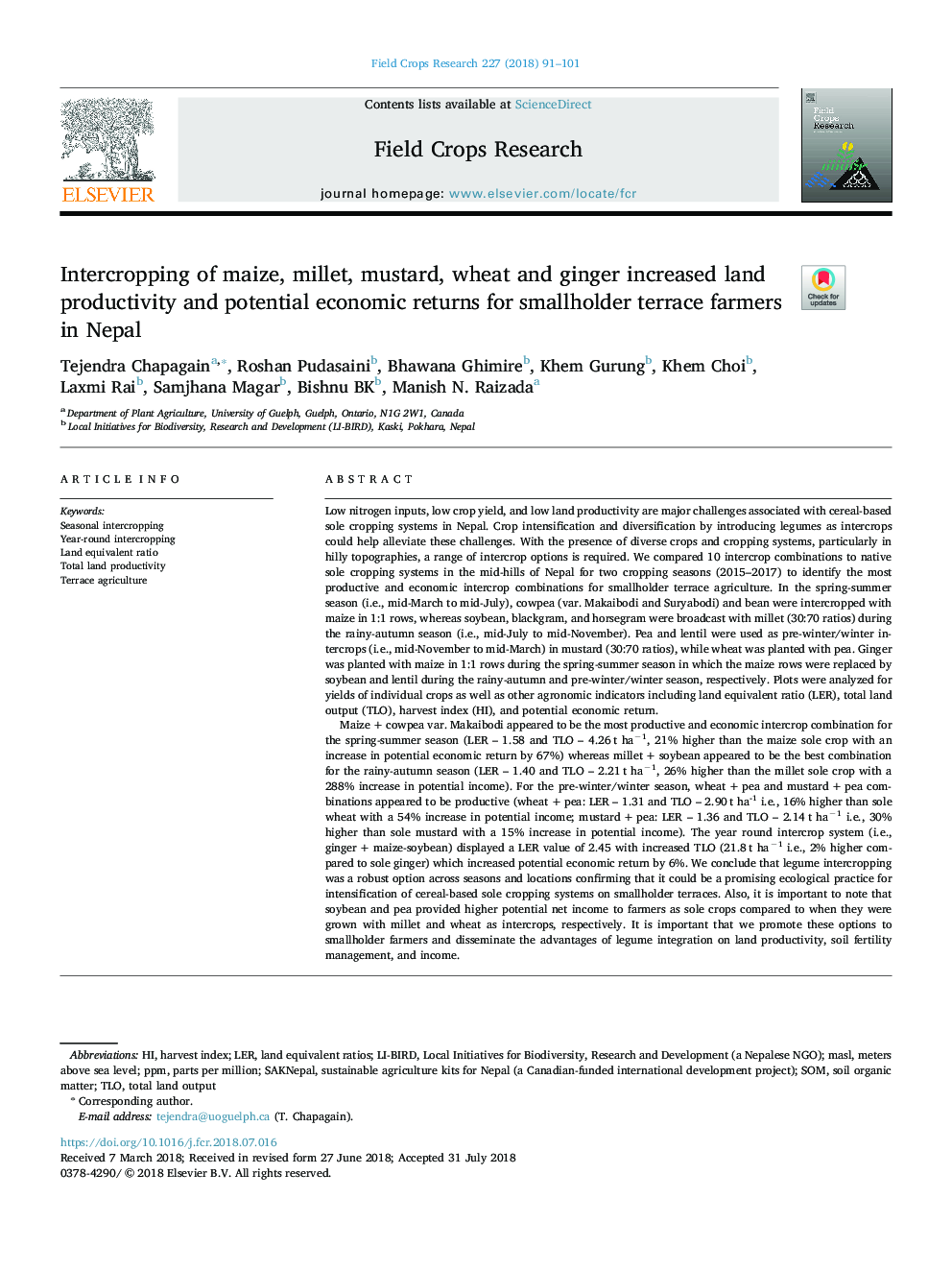| Article ID | Journal | Published Year | Pages | File Type |
|---|---|---|---|---|
| 8879055 | Field Crops Research | 2018 | 11 Pages |
Abstract
Maizeâ+âcowpea var. Makaibodi appeared to be the most productive and economic intercrop combination for the spring-summer season (LER - 1.58 and TLO - 4.26ât haâ1, 21% higher than the maize sole crop with an increase in potential economic return by 67%) whereas milletâ+âsoybean appeared to be the best combination for the rainy-autumn season (LER - 1.40 and TLO - 2.21ât haâ1, 26% higher than the millet sole crop with a 288% increase in potential income). For the pre-winter/winter season, wheatâ+âpea and mustardâ+âpea combinations appeared to be productive (wheatâ+âpea: LER - 1.31 and TLO - 2.90ât ha-1 i.e., 16% higher than sole wheat with a 54% increase in potential income; mustardâ+âpea: LER - 1.36 and TLO - 2.14ât haâ1 i.e., 30% higher than sole mustard with a 15% increase in potential income). The year round intercrop system (i.e., gingerâ+âmaize-soybean) displayed a LER value of 2.45 with increased TLO (21.8ât haâ1 i.e., 2% higher compared to sole ginger) which increased potential economic return by 6%. We conclude that legume intercropping was a robust option across seasons and locations confirming that it could be a promising ecological practice for intensification of cereal-based sole cropping systems on smallholder terraces. Also, it is important to note that soybean and pea provided higher potential net income to farmers as sole crops compared to when they were grown with millet and wheat as intercrops, respectively. It is important that we promote these options to smallholder farmers and disseminate the advantages of legume integration on land productivity, soil fertility management, and income.
Keywords
Related Topics
Life Sciences
Agricultural and Biological Sciences
Agronomy and Crop Science
Authors
Tejendra Chapagain, Roshan Pudasaini, Bhawana Ghimire, Khem Gurung, Khem Choi, Laxmi Rai, Samjhana Magar, Bishnu BK, Manish N. Raizada,
